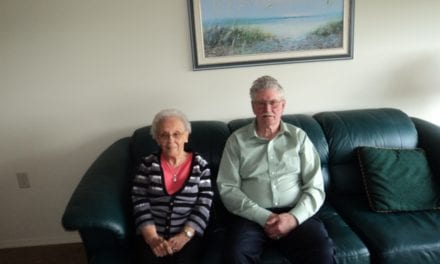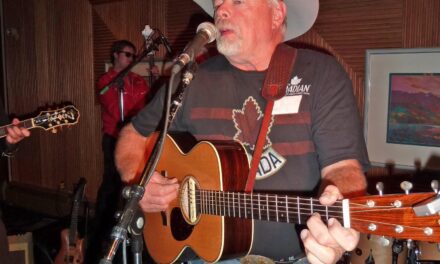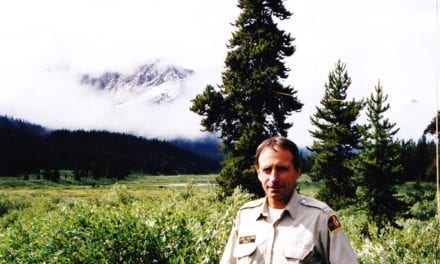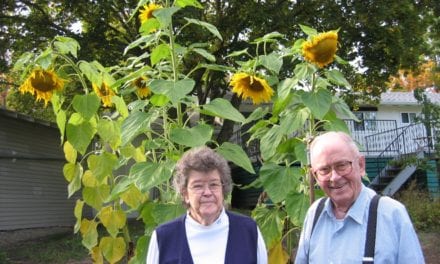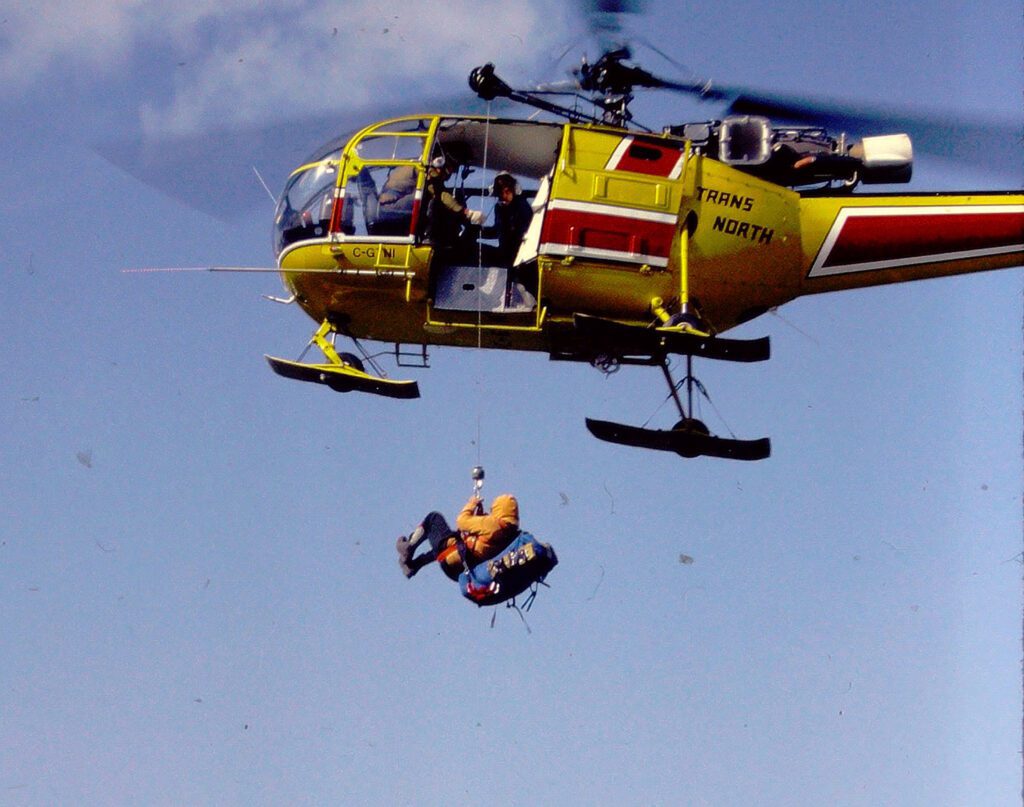
Rescue practice with the Alouette III helicopter, Kluane National Park.
Doug: In Kluane, one of the more exciting training sessions we did was we skied across the glacier in front of Mount Logan with a couple of rangers from the adjacent US park. It was a fabulous trip and very interesting. There was no excitement, just skiing. One of the more exciting trips I had in Kluane, I got a call from Lloyd Freese who was the public safety guy there. He said he was going down into the US, to the town along the coast, to check out some climbers. So we went by helicopter from Haines Junction to Haines Alaska and went through customs. Then we flew up the coast in the gulf there, and I think it was a place called Yakatat where we met the US ranger there, and talked to some climbers who were flying into the icefields from there. Then we took the helicopter and flew up into the icefields near Logan and then flew back to Haines Junction. It was the most beautiful, amazing trip I’ve ever had. The interesting part of that, when Lloyd called, it was late March and Lloyd said we were going to leaving first thing in the morning on April 1st. I got thinking about this and Lloyd was a real trickster. I thought April 1st, this is an April Fool’s joke he’s doing on me, but I went down anyway. It turned out it wasn’t a joke – it was the real thing and it turned out great.
SH: Did you get to do the Nahanni River when you were up in that Park?
Doug: Yes, I was the second warden to be hired there and the other one, Ray Frey, had been there a year longer than me. We didn’t know how to get around and travel on the river so that was what we did. We travelled on the river and explored the whole time trying to figure out what was there and where problems were going to be and things like that. It was very interesting spending a lot of time traveling on the river.
SH: That would have been spectacular.
Doug: We had some senior Parks people coming from Ottawa, so we flew some gas and drums up above the falls to help their trip. When we got there, we found one barrel was missing. So we flew down the river to see if we could find it, and sure enough it had washed off. It had gone over the falls and this barrel was now about half as tall as it was supposed to be. It was absolutely crushed, it was so amazing. But we did find out where it went.
SH: I’m sure you have some good wildlife stories Doug.
Doug: Well, the surveys were always quite interesting. In Kluane we did a lot of surveys for sheep and goats and wolves. That was the thing in Riding Mountain and Prince Albert. There was a lot of wolves. I used to find wolf kills very often and I would check them out to see what species and how healthy they were, and other things like that. I had a great many experiences of wolf kills and wolf activities.
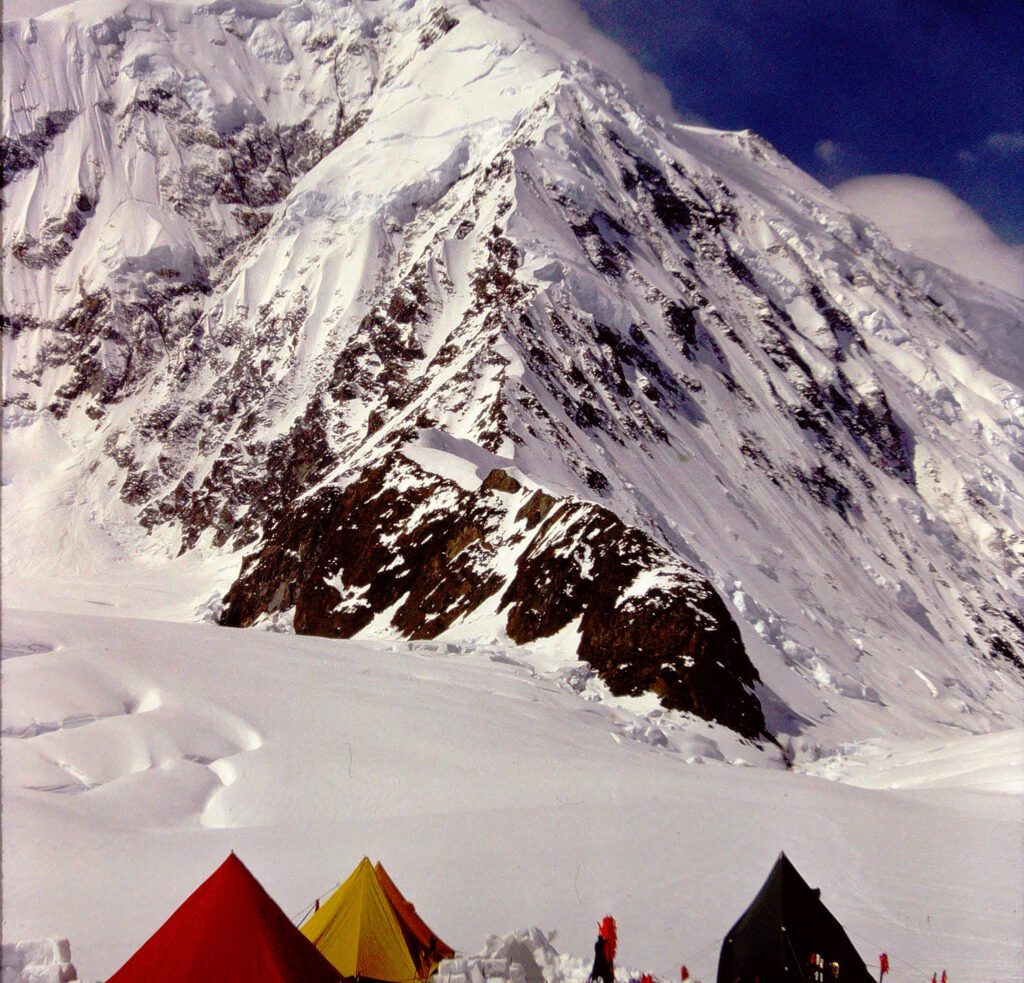
Camping on the East ridge of Mount Logan in preparation for ascent.
SH: Did you see many wolves when you worked there?
Doug: Yes, I would see wolves quite often and we used to go howl for them to find out where they were, so we would howl, and they would respond to us sometimes. It was very interesting.
Faye: Doug could probably tell you where every eagle nest along the coast in Gwaii Haanas would be. He was always watching there and every time we would go boating down there, he’d stop the boat all of a sudden and I would wonder why. It was usually because he was checking out another eagle’s nest. He knew where the nests were, and he’d always keep track of the active ones. He had a whole record of eagles.
SH: Wow, would they migrate or over winter there?
Doug: They mostly over winter there. They don’t migrate very far at all. We’d send a few injured ones down to Vancouver and the people in Vancouver told us our eagles were bigger than most of the other eagles they dealt with. The eagles on Haidi Gwaii seemed to be different than most of the others on the coast.
SH: They must have had a good diet there.
Doug: Yes, lots of very good food. (Tape 30:25)
SH: You mentioned bats as well Doug. What type of bats were you looking at?
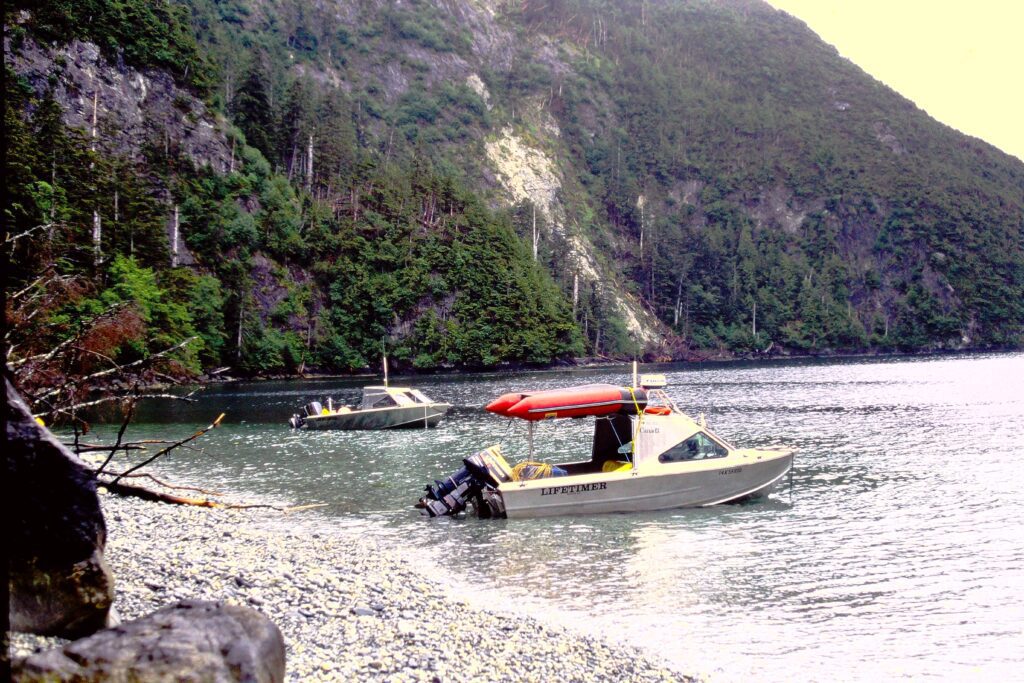
Parks Canada boats used to travel in Gwaii Haanas National Park.
Doug: I started looking at a colony of Keen’s long eared bats. We were interested in them because they were roosting in the rocks by the hot springs. So, there was concern about humans using the pools all the time and were they going to influence the bats or scare the bats away. I studied them for a number of years. The bats like to roost in hot places so around the pool there were lots of rocks that were very hot, so they were enjoying the pools just about as much as humans were.
SH: Was there a conflict with humans or were they okay with that?
Doug: There wasn’t any major conflicts because most people are going to the hot springs in the daytime when the bats are in the rocks sleeping. The bats would come out only late, after dark so there were no real conflicts. The bats were roosting a fair distance away from the pools, so it wasn’t a problem.
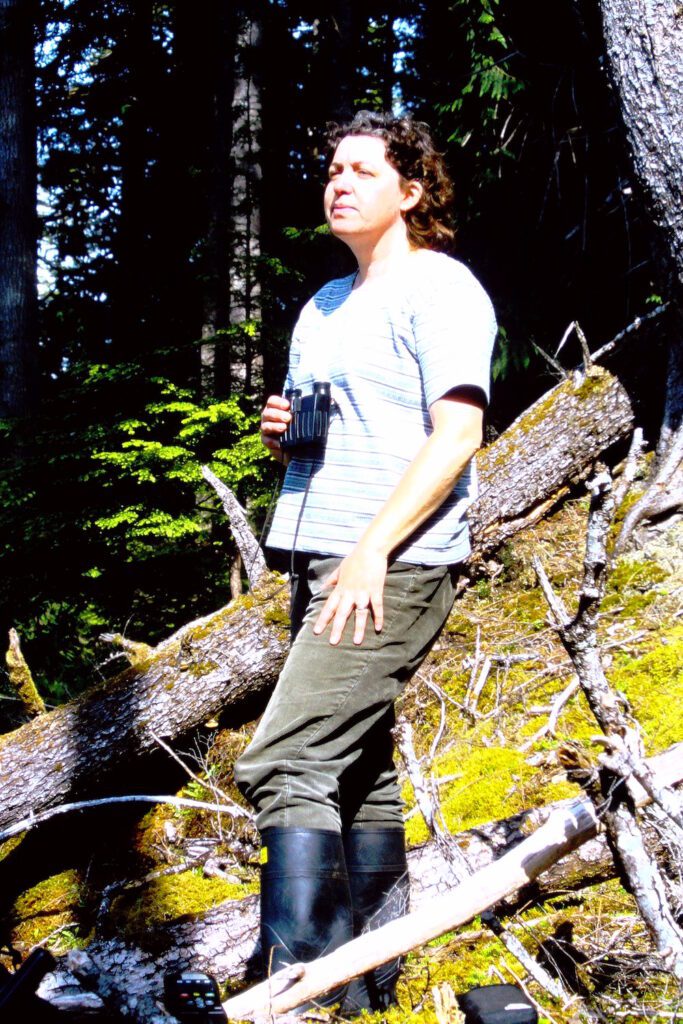
Faye assisting with bat research.
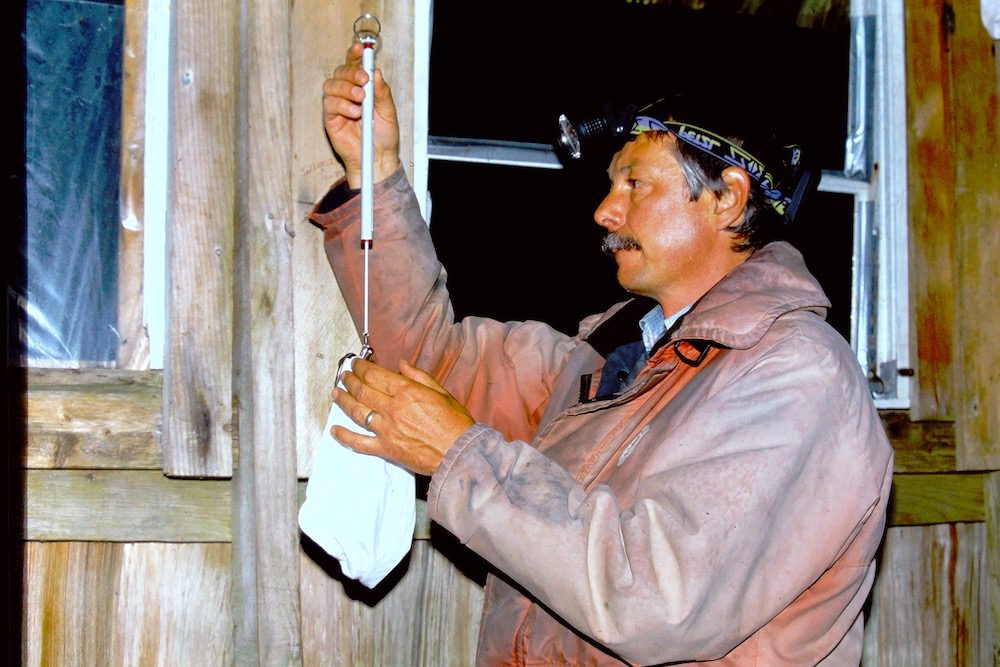
Wolverine CAMERA
Doug weighing a capture bat on Hot Springs Island, Gwaii Haanas N.P.
SH: Would you like to tell any rescue stories? You were Mr. Public Safety out there.
Doug: I think the one I am really reminded of was in Prince Albert. One afternoon about 5 or 6 o’clock, we got a report from a family there about their son. They were skiing on this trail and their son disappeared. They didn’t know where the heck he was. It was a loop trail and so we went and started to search for him. A guy went around on the skidoo and didn’t find him. We were quite certain he’d gone around the loop a second time. But we went around, and he wasn’t there. By then it was starting to get dark and very cold, so we were starting to worry.
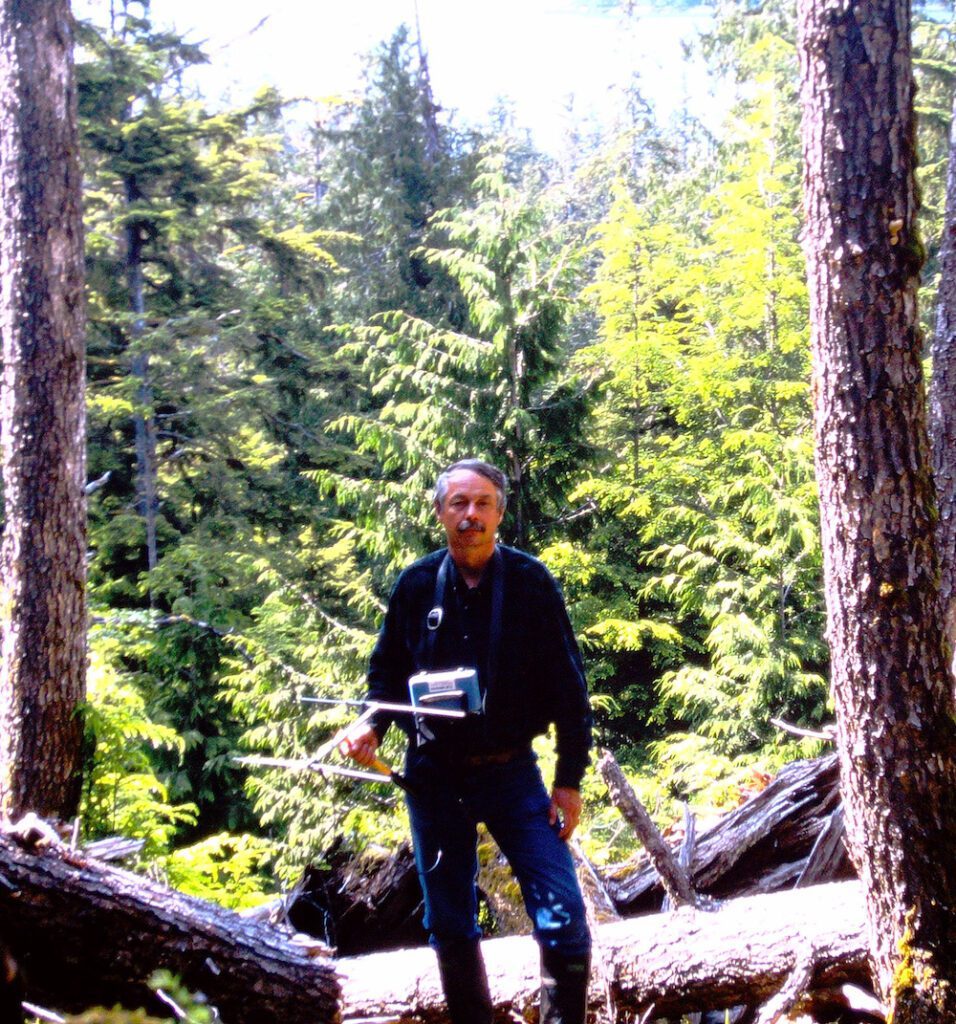
Doug searching for a radio-collared bat high up on Ramsay Island, Gwaii Haanas.
But then there was another warden who was skiing the trail and because he was going slower than the skidoo, he found the kid. He was laying in the snow off the trail, so he called for help and we got him out okay. And it was a day or two later when I realized that could have been a very deadly situation. The kid was wet, and it was starting to get very cold. If we hadn’t found him he would have been sleeping in that snow pile all night and probably wouldn’t have made it. It worked out that we did find him, and it was a successful recovery so everything was great.
SH: Successful recoveries are the great ones.
Doug: I think some of the really hateful ones that I didn’t like in Prince Albert …. We were responsible in the townsite there, and when I first went there, there was a guy who had a horse pulled wagon and he would give the kids rides on this thing, just up and down the road. One day a car, I think there were some young kids who I think were drunk, sideswiped this thing and knocked the wagon over. It was a disaster. As a young warden with not a lot of experience, I was absolutely shocked about it, and it was very hard to deal with.
Fortunately, I was working with a very senior warden, who was very good at it. One of the things he told me was to go look around for some kids hiding under something. We looked around and sure enough there was one kid under a tree. He had been on the wagon and was thrown off and had crawled under this tree for protection I guess. He was hurt, and we needed to pull him out and help him. There were some other very seriously hurt kids.
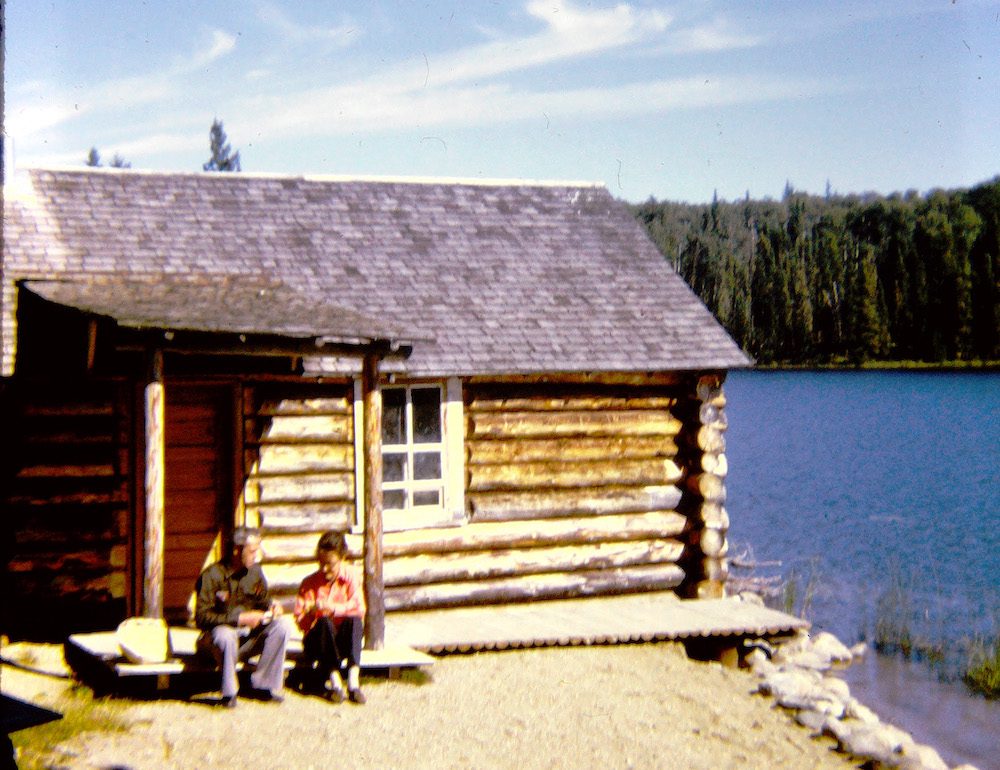
Guiding Grey Owl’s daughter Shirley Dawn and her husband at Grey Owl’s cabin on Lake Ajawaan, Prince Albert National Park.
